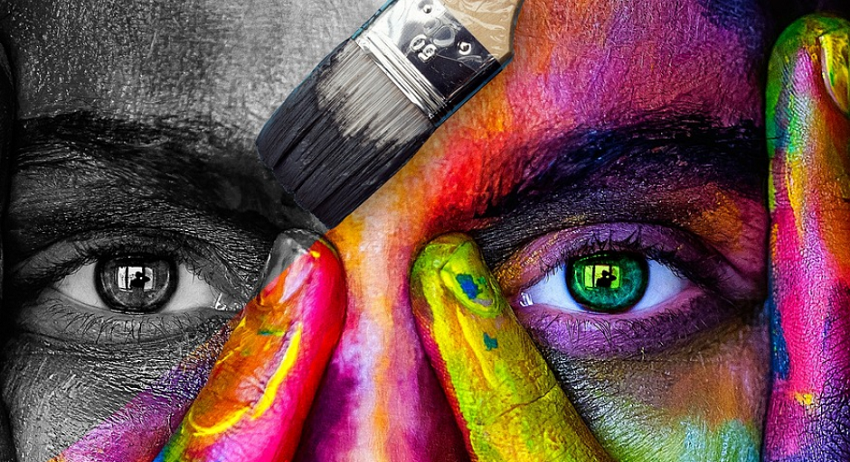
29 Jul Is Art Therapy a Psychological Therapy?
Art therapy is a fascinating and effective form of psychological therapy that utilizes creative expression as a means of promoting emotional well-being, self-awareness, and healing. This unique approach to therapy has gained popularity over the years, proving to be a valuable tool for individuals dealing with various emotional, mental, and psychological challenges. In this article, we will explore the world of art therapy, its benefits, and how it differs from traditional psychological therapies. This article is provided by anxietyfightersguide.com
What is Art Therapy?
Art therapy is a form of therapeutic intervention that encourages individuals to express themselves creatively through various art forms, such as painting, drawing, sculpting, and collage-making. By engaging in these activities, individuals can discover what is art therapy and tap into their subconscious minds to explore their emotions, thoughts, and experiences in a non-verbal manner. This process can be a powerful tool for personal growth and healing.
The Role of the Art Therapist
An art therapist is a trained professional who guides and supports individuals throughout their art therapy sessions. They create a safe and non-judgmental environment where clients can freely express themselves and work through their emotional challenges.
How Art Therapy Works
In art therapy, the process of creating art becomes a powerful means of communication. The artwork serves as a visual representation of the client’s inner world, allowing the therapist to gain insights into their emotions and thoughts. Through analysis and discussion of the artwork, the therapist helps the client gain a deeper understanding of their feelings and experiences.
Who Can Benefit from Art Therapy?
Art therapy is a versatile form of therapy that can benefit people of all ages and backgrounds. It is particularly helpful for individuals struggling with trauma, anxiety, depression, grief, and other emotional or psychological issues.
Art Therapy in Practice
In a typical art therapy session, the client is encouraged to engage in the creative process without any preconceived notions or judgments. The therapist may provide prompts or specific art exercises to explore certain emotions or themes. The focus is not on creating a masterpiece but on the healing journey the art represents.
The Therapeutic Benefits of Art Therapy
Art therapy offers a wide range of therapeutic benefits, including:
Self-Expression and Communication
Art provides a safe outlet for individuals who find it challenging to express themselves verbally. It allows them to communicate their feelings and experiences through visuals rather than words.
Stress Reduction
Engaging in the creative process can be highly relaxing and can reduce stress levels. Art therapy provides a healthy way to unwind and let go of tension.
Increased Self-Awareness
Creating art can help individuals gain insights into their own behaviors, thoughts, and emotions, leading to greater self-awareness and personal growth.
Emotional Release
Art therapy enables individuals to release pent-up emotions and process difficult experiences, promoting emotional healing and well-being.
How Art Therapy Differs from Traditional Psychological Therapy
While both art therapy and traditional psychological therapy aim to improve mental and emotional health, they differ in their approaches. Traditional therapy typically relies on verbal communication and cognitive exploration, whereas art therapy uses the creative process to delve into the subconscious mind.
The Science Behind Art Therapy
Research has shown that art therapy can have positive effects on brain function, emotional regulation, and overall psychological well-being. Engaging in the creative process triggers the release of dopamine, the brain’s “feel-good” chemical, promoting a sense of happiness and accomplishment.
The Ethics of Art Therapy
As with any form of therapy, art therapy adheres to a strict code of ethics to ensure the safety and well-being of clients. Confidentiality, respect, and empathy are fundamental principles in the practice of art therapy.
Art Therapy Techniques
Art therapists utilize various techniques based on the individual’s needs and goals. Some common techniques include guided imagery, mask-making, and collage therapy.
The Impact of Art Therapy on Various Conditions
Art therapy has shown promise in treating a wide range of conditions, including:
Post-Traumatic Stress Disorder (PTSD)
Art therapy can help individuals process traumatic experiences and reduce the symptoms of PTSD.
Autism Spectrum Disorder (ASD)
For individuals with ASD, art therapy can improve communication skills and foster social interaction.
Substance Abuse and Addiction
Art therapy can be an effective tool in the recovery process, helping individuals explore their emotions and find healthier coping mechanisms.
The Future of Art Therapy
As the field of mental health continues to evolve, art therapy is likely to gain even more recognition as a valuable and evidence-based form of psychological therapy.
Conclusion
Art therapy is a powerful and creative way to address emotional and psychological challenges. Through the process of artistic expression, individuals can gain profound insights and experience healing on a deeper level. If you are seeking a therapeutic approach that encourages self-discovery and emotional growth, art therapy might be the perfect fit for you.
FAQs
- Is art therapy suitable for children?
Yes, art therapy is highly beneficial for children, as it allows them to express themselves and process emotions in a non-threatening manner.
- Can you benefit from art therapy even if you’re not an artist?
Absolutely! Art therapy does not require any artistic skill or background. The focus is on the process of creating, not the end result.
- How long does art therapy usually last?
The duration of art therapy varies depending on individual needs and goals. Some may find benefit from short-term interventions, while others may engage in longer-term therapy.
- Are the art therapy sessions one-on-one or in groups?
Art therapy sessions can be conducted both one-on-one and in group settings. Each approach offers unique benefits.
- How do I find a qualified art therapist?
To find a qualified art therapist, you can reach out to mental health organizations, search online directories, or ask for recommendations from healthcare professionals.



Sorry, the comment form is closed at this time.